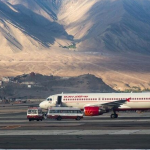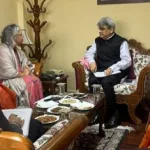In the recent past decade, numerous healthcare institutions have emerged in major districts of Kashmir, including medical colleges with associated hospitals and private sector hospitals. However, despite these developments, a significant gap remains in the proper delivery of healthcare services.
The majority of people are unsatisfied, and growing conflicts between healthcare staff and patient attendants are visible on a daily basis. To address this issue, we must analyze the underlying reasons and chart a path forward to improve and streamline the healthcare delivery system in the valley.
Firstly, the Health and Medical Education Department, along with the associated departments and bureaucracy, must acknowledge the outdated century-old policies and upgrade them according to the existing population, in line with WHO guidelines. Proper checks and audits should be put in place if the government is genuinely committed to providing quality and timely healthcare services to its people.
A crucial aspect of improving the healthcare delivery system is strengthening primary healthcare centers and establishing a proper referral system. Patients should be referred to sub-district or district hospitals and associated medical college hospitals as needed. If further advanced treatment is required, patients should be referred to tertiary care hospitals in Srinagar, where most cases requiring specialized care should be directed. This would streamline the process of quality healthcare delivery in these super-specialty hospitals, reduce patient load, and enable doctors to provide better care and treatment.
To achieve this, super-specialty hospitals should primarily receive referral patients from district hospitals that cannot provide the required treatment. If patients with common ailments continue to flock to Srinagar hospitals, the chaos will persist. In this digital age, where a large chunk of the valley’s population uses the internet and social media, there is a need for online health portals.
Patients should be able to book appointments for clinics, check their treatment, laboratory reports, and doctor comments, starting from district and super-specialty hospitals in Srinagar. This would streamline the treatment process and reduce the undue patient load in tertiary care hospitals.
Another important aspect is the timely and proper handling of emergencies and trauma cases through the implementation of triage and level systems in emergency rooms and casualty departments of each hospital. This concept was previously well-established at SKIMS before the 1990s, but was disrupted due to unrest.
Furthermore, there is a need for optimal distribution and utilization of manpower services in healthcare. Currently, super-specialist doctors are often posted in primary healthcare centers and sub-district hospitals.
A blanket ban on private practice for healthcare workers in public healthcare institutions would ensure their exclusive focus on these facilities. This would also enable the development of both public and private hospitals, providing quality healthcare services.
Lastly, committed political and bureaucratic willingness, along with a disciplined approach, will make a significant difference in providing meaningful and proper quality healthcare to the people of the valley, which is a fundamental right in any civilized society.
(Author is MD, MIMS, Senior Specialist in Anesthesia, Palliative, and Critical Care)








